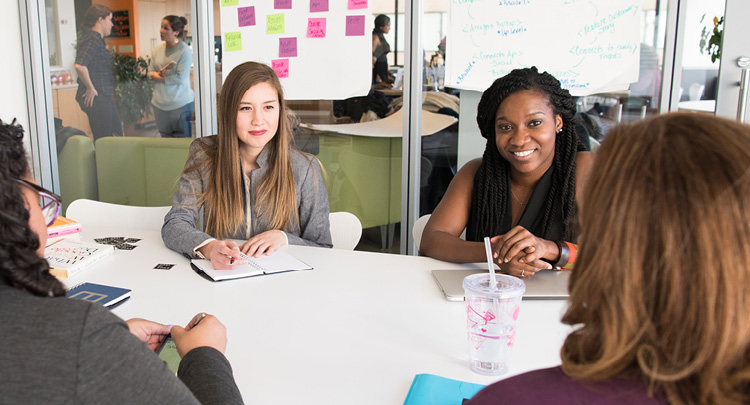Millennials in the Nonprofit Workforce Present Challenges and Opportunities


Download and read the entire report, featuring all 11 trends, here.
 The most recent data available show that the nonprofit sector employs 12.4 million workers, 10.2% of the U.S. workforce overall, at an average wage of $53,367 (U.S. Bureau of Labor Statistics, 2019). The sector employs more than 15% of the workforce in 10 states, including, for example, Pennsylvania, Minnesota, and New York, and is the third largest workforce in the country, behind only “retail trade” and “accommodations and food service,” and equal to “manufacturing” (Salamon & Newhouse, 2019). By any measure, the nonprofit sector is a major force in the U.S. economy.
The most recent data available show that the nonprofit sector employs 12.4 million workers, 10.2% of the U.S. workforce overall, at an average wage of $53,367 (U.S. Bureau of Labor Statistics, 2019). The sector employs more than 15% of the workforce in 10 states, including, for example, Pennsylvania, Minnesota, and New York, and is the third largest workforce in the country, behind only “retail trade” and “accommodations and food service,” and equal to “manufacturing” (Salamon & Newhouse, 2019). By any measure, the nonprofit sector is a major force in the U.S. economy.
This year, millennials — born between 1981 and 1996, although interpretations vary — are predicted to make up more than half of the U.S. labor force for the first time, outnumbering baby boomers who are about a quarter of the workforce (Fry, 2018). The U.S. population as a whole is expected to hit majority minority status by 2045 (Frey, 2018). Emerging, more heterogeneous generations are requiring that workplaces of all kinds evolve. Philanthropy is no exception.
Nonprofit leaders are well aware that, despite vocal enthusiasm and mountains of data, we are not making rapid enough progress in diversifying the sector (e.g., BoardSource, 2017; Funders for LGBTQ Issues, 2018). Hiring and retention can mitigate this stagnation. However, larger demographic shifts also require philanthropy to “keep up with the times.” Some organizations are looking to open the doors wider by focusing on entry points. Opportunities include:
This generational changing of the guard presents both great opportunity and some challenges for the nonprofit workforce. On the challenge side, much has been written about the personality traits of millennials — and some of it is supported by research. Well-done research has shown that narcissism and high self-esteem are more prevalent in millennials than in previous generations. (See Ng, Lyons, & Schweitzer, 2012 for a summary of the research.) They want close contact with their managers — in fact, they are looking for coaches rather than bosses, and they change jobs more frequently (Gallup, 2016). As a sector that already struggles with a lack of skilled leaders and high turnover rates, nonprofits will have to re-examine how they think about talent development and retention.
“As a sector that already struggles with a lack of skilled leaders and high turnover rates, nonprofits will have to re-examine how they think about talent development and retention.”
The opportunity for nonprofits is that millennials are looking for more than a paycheck; they want their work to have meaning and see their work as their life — not just a job — while at the same time seeking good work-life balance (Gallup, 2016). They are values-based and may be willing to trade higher pay and faster advancement for more flexibility (ProInspire, 2015; Finn & Donovan, 2013). These changing attitudes are reflected in their desires for workplace change:
Mission-driven nonprofit work would seem to be an ideal match for this generation of the labor force. However, as more for-profit companies emphasize social outcomes, the nonprofit route may actually be less attractive based on salaries and benefits. Meanwhile, evolving technologies and for-profit social enterprises are providing ways outside of traditional work and formal organizations to engage (Millennial Impact Report, 2018).
The millennial generation is the most diverse in the history of the country (56% of millennials are white, versus 72% of Baby Boomers) (ProInspire, 2015). The increasing diversity of the overall working population will lead to a more diverse pool from which to draw employees. However, nonprofits need to take steps to create better and clearer pathways into leadership positions if they hope to keep this generation of employees engaged.


BoardSource. (2017). Leading with intent: 2017 BoardSource index of nonprofit board practices. Retrieved from https://leadingwithintent.org
Finn, D. & Donovan, A. (2013). PwC’s NextGen: A global generational study 2013. Retrieved from https://www.pwc.com/gx/en/hr-management-services/publications/assets/pwc-nextgen.pdf
Frey, W. (2018, September 10). The US will become ‘minority white’ in 2045, Census projects [Blog post]. Retrieved from https://www.brookings.edu/blog/the-avenue/2018/03/14/the-us-will-become-minority-white-in-2045-census-projects
Fry, R. (2018, April 11). Millennials are the largest generation in the U.S. labor force. Retrieved from https://www.pewresearch.org/fact-tank/2018/04/11/millennials-largest-generation-us-labor-force
Fund the People. (2019). Talent Justice Toolkit: Investing in Equity in the Nonprofit Workforce. Retrieved from http://fundthepeople.org/toolkit/wp-content/uploads/2019/06/TalentJusticeToolkit.pdf
Funders for LGBTQ Issues. (2018). The 2018 diversity among philanthropic professionals report: A tale of two sectors. Retrieved from https://lgbtfunders.org/research-item/2018-dapp-report
Gallup. (2016). How millennials want to work and live. Retrieved from https://www.gallup.com/workplace/238073/millennials-work-live.aspx
Grigoryev, P. (2006, Winter). Hiring by competency models. The Journal for Quality and Participation, 29(4), 16–18, 39. Retrieved from https://search.proquest.com/docview/2191083603
Millennial Impact Report. (2018). The 2017 millennial impact report, year in review: An invigorated generation for causes and social issues. Retrieved from http://www.themillennialimpact.com/sites/default/files/reports/FinalReport_MIR2017_030618-v4.pdf
Ng, E. S., Lyons, S. T., & Schweitzer, L. (Eds.). (2012). Managing the new workforce: International perspectives on the millennial generation. Northmanption, MA: Edward Elgar Publishing.
ProInspire. (2015, October). A force for impact. Retrieved from https://proinspire.org/wp-content/uploads/2015/10/ProInspire-Millennials-in-the-Nonprofit-Sector-report-2015-digital.pdf
Salamon, L. M. & Newhouse, C. L. (2019, January). The 2019 nonprofit employment report, Nonprofit Economic Data Bulletin no. 47. Retrieved from http://ccss.jhu.edu/wp-content/uploads/downloads/2019/01/2019-NP-Employment-Report_FINAL_1.8.2019.pdf
SHRM. (2015). SHRM research: Flexible work arrangements. Retrieved from https://www.shrm.org/hr-today/trends-and-forecasting/special-reports-and-expert-views/Documents/Flexible%20Work%20Arrangements.pdf
Talent 2025 and West Michigan Works! (2018, August). HireReach: Executive Summary. Retrieved from https://static1.squarespace.com/static/5b86a6a35b409bf1be02158f/t/5b86befb70a6adf8ed01ad07/1535557371814/HireReach_Executive+Summary+August2018.pdf
U.S. Bureau of Labor Statistics. (2019). Research data on the nonprofit sector. Retrieved from https://www.bls.gov/bdm/nonprofits/nonprofits.htm